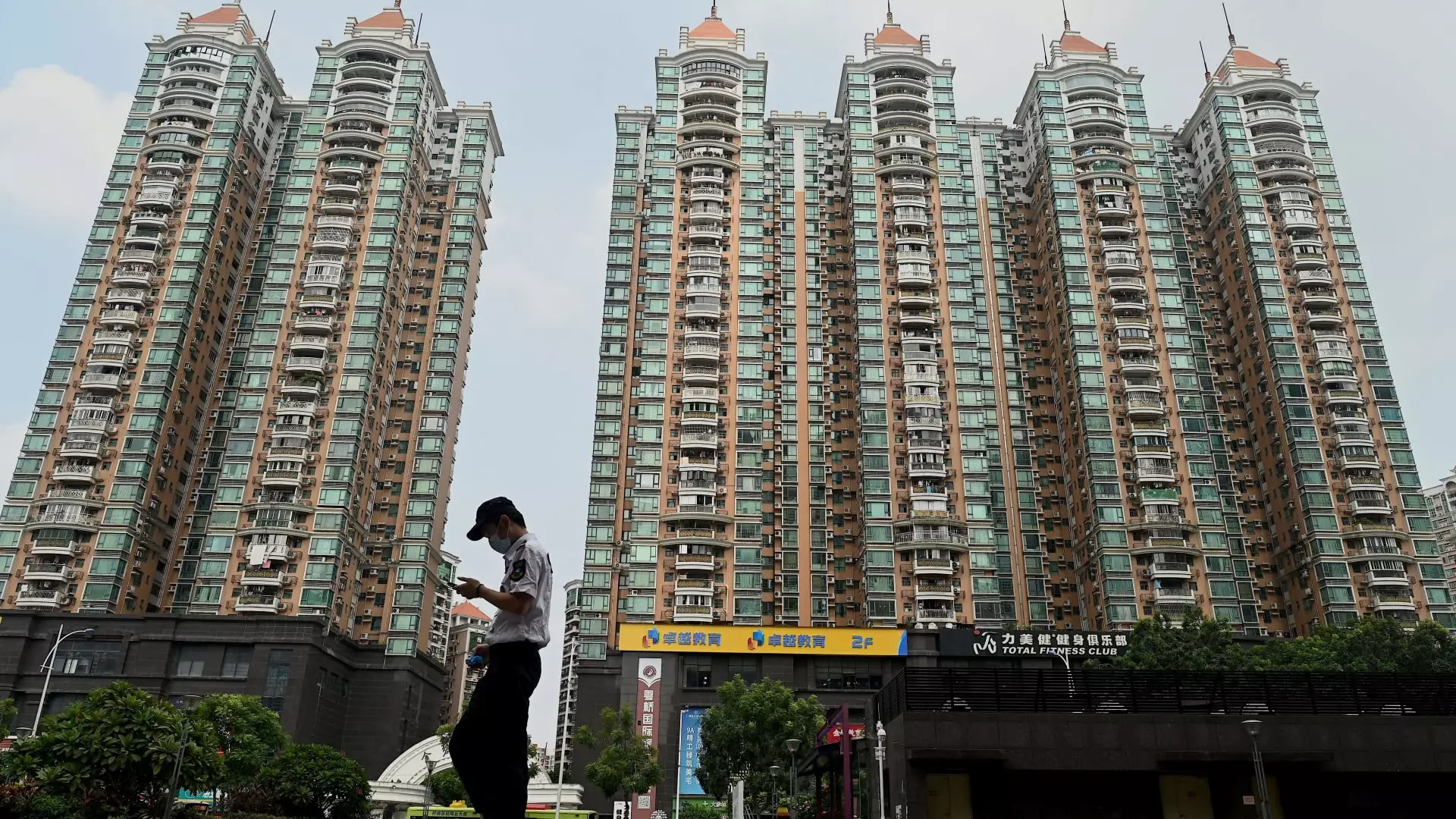The Chinese property market witnessed a significant surge on Monday as evidence emerged of governmental measures aimed at enhancing homebuyer confidence, particularly in major cities across mainland China. The Hang Seng Mainland Properties Index saw a remarkable increase of 7%, reflecting an optimistic outlook among investors after last week’s surge of over 30%. This bullish trend can be attributed to cities like Guangzhou, which announced the removal of all home purchase restrictions, signaling a proactive approach to stimulate the local real estate market.
Previously, many potential homebuyers faced hurdles such as stringent tax and insurance requirements that limited their purchasing power. Under the old regulations, migrant families were obliged to demonstrate a continuous tax or insurance payment for at least six months to qualify for buying homes, while single individuals faced a cap of one apartment. The recent relaxation of these guidelines suggests a significant policy shift designed to facilitate broader access to the housing market.
The Shanghai government’s recent decision to reduce the tax-paying duration from three years to just one represents a noteworthy change in policy. Furthermore, they lowered the down-payment requirements, reducing the burden on first-time buyers significantly. The down-payment for initial home purchases now stands at approximately 15%, while the down payment for second homes is set at 25%, which, although higher than the national average, still offers a more accessible path for potential buyers.
Similarly, Shenzhen has followed suit by relaxing its purchasing limits as well. Previously constrained to two homes, local families can now qualify for an additional purchase, and migrant families with children can benefit from additional flexibility in acquiring properties. These initiatives signal a clear intent to revitalize the real estate market, specifically within urban centers that serve as economic engines for the country.
Analysts have pointed to the potential for these easing measures to yield substantial benefits in property sales, particularly in first-tier cities such as Beijing and Shanghai. Allen Feng from Rhodium Group posits that these cities may experience a more pronounced improvement in property sales compared to smaller regions, where similar policy implementations have historically yielded limited results. Gary Ng, an economist with Natixis, echoes this sentiment, highlighting that elevated inventory levels may hinder significant rebounds in less populated areas.
The backdrop of these market shifts is a heavy push from Beijing to address stagnation in the real estate sector. During a pivotal high-level meeting last week, Chinese President Xi Jinping emphasized the necessity for authorities to intervene decisively to stabilize and recover the property market. This has prompted the People’s Bank of China to take further measures, such as reducing interest rates on existing mortgages by an average of 0.5 percentage points and cutting the down-payment ratio for second homes to facilitate consumer access.
Despite these positive moves, the Chinese real estate market remains in a precarious position. After years of stringent regulations that aimed to curtail high levels of debt, the sector finds itself in a multi-year downturn, which calls for robust and sustained intervention from the government. The historical significance of real estate as a contributor to GDP—accounting for over a quarter—illustrates the necessity for revitalization in this sector.
Many experts contend that the government’s previous efforts have fallen short in yielding tangible recoveries. Erica Tay from Maybank highlights that confidence among homebuyers has been severely undermined, necessitating urgent action on stalled construction projects. With only 4% of the planned floor space made available for habitation this year, completing these projects will be crucial in restoring consumer faith in the housing market.
As the Chinese government seeks to bolster its property market further, finding the right balance between stimulating demand and ensuring financial stability will be paramount in navigating the complexities that characterize this crucial sector. Only time will reveal the true efficacy of these measures in propelling the economy back to a path of sustainable growth.

